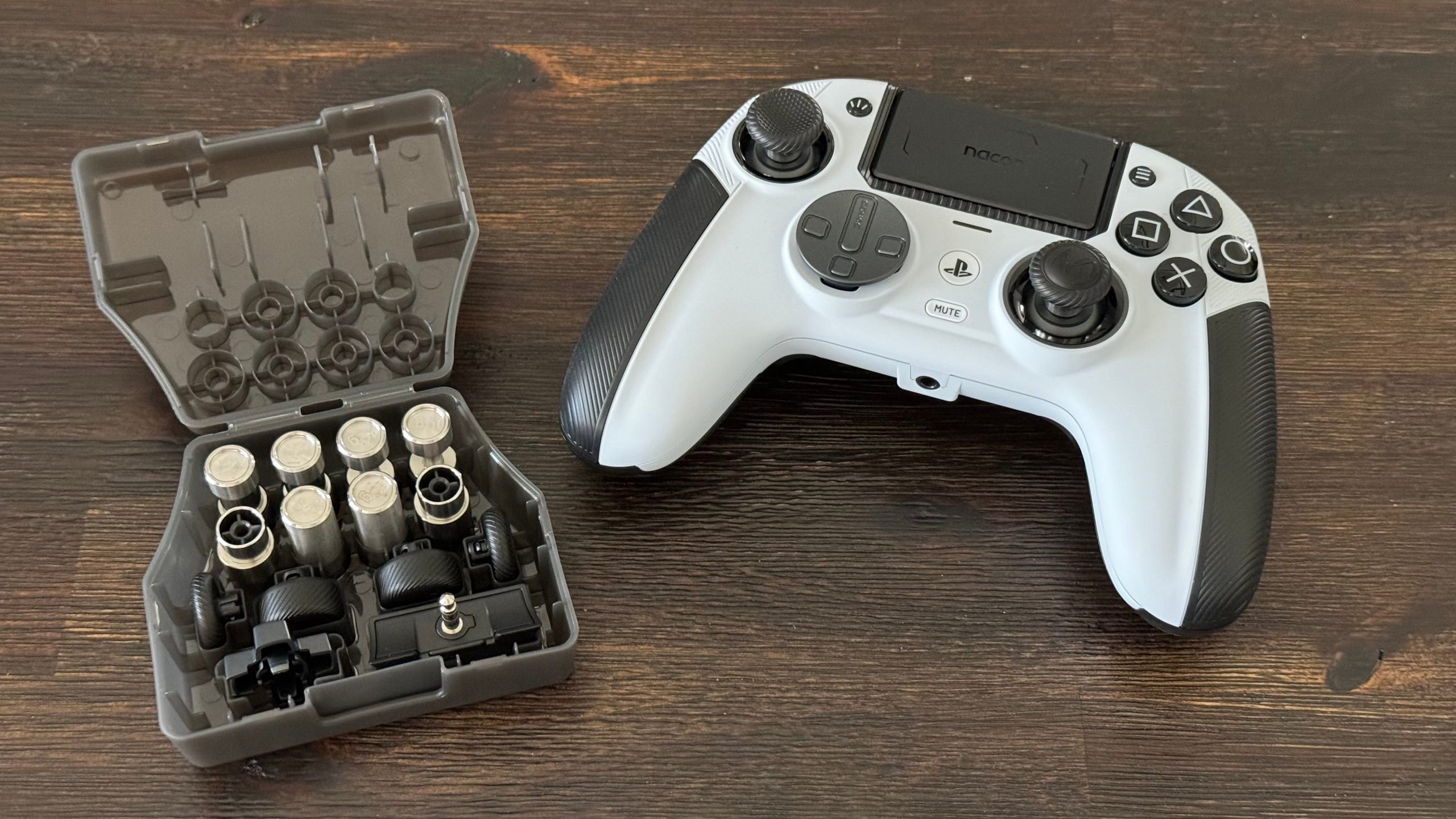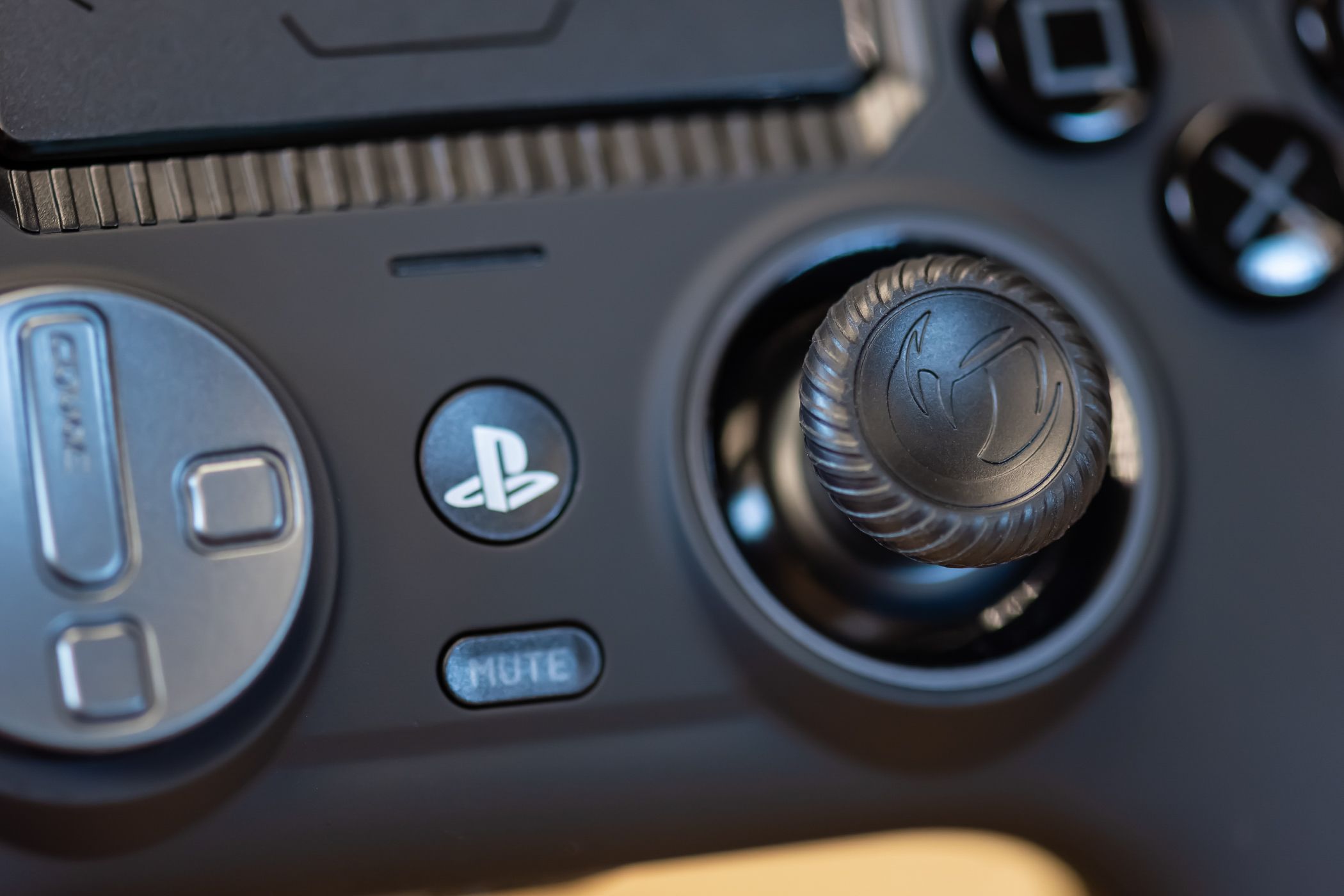In the highly competitive market for professional controllers for consoles, there are official manufacturers as well as third-party makers who perform quite well. SCUF Gaming is one such company, but another notable player is Nacon, a French manufacturer, which released the Nacon Revolution Pro 5 at the beginning of November. I received this controller upon its release and have been using it regularly since then, alternating between the standard DualSense, the DualSense Edge, the SCUF Gaming controller, and now the Nacon Pro Revolution 5. After a month and a half of use, I will share my opinion on its strengths and weaknesses, as well as whether or not it is worth investing 230€.
Design & Durability
The Nacon Revolution Pro 5 includes a durable padded shell case with a zipper closure, enabling you to transport the controller safely without causing damage. Inside the case, there are various accessories for customizing your controller, including a sturdy braided cable and a dongle for Bluetooth connectivity. It is important to note that the analog stick must be in the correct position to switch between wired and wireless modes. A notable feature is the battery indicator located beneath the touchpad, which uses five illuminated dots; this is particularly useful given the controller’s long-lasting battery life—providing between 8 and 10 hours of use on a single charge. The Nacon Revolution Pro 5 is available in two color options: full black or a bi-color model combining white and black, with the latter chosen by me to enhance certain design elements of the controller.
Let’s begin by discussing the design. Of course, this aspect is purely subjective because tastes and colors are not up for debate, although opinions can vary. Nacon has chosen a design that starkly contrasts with the DualSense to infuse its own artistic touch. In reality, the Nacon Revolution Pro 5 follows its evolution since the creation of the range, which has consistently opted for less rounded and more pronounced contours in certain areas. One either likes it or dislikes it, but personally, I quite enjoy it as it allows differentiation from standard models, something SCUF Gaming did not achieve, staying relatively close to Sony’s official design. Please note that Nacon has developed its Revolution Pro 5 under a PlayStation license, allowing it to have the PlayStation badge on the packaging and thus gaining PlayStation’s endorsement. This is crucial to mention.
Pleasure in the Hands
The style and design are subjective matters of personal taste; however, ergonomics tend to be more universally appreciated. In terms of grip, the Nacon Revolution Pro 5 excels due to its thicker, less tapered handles compared to those of the DualSense classic model. This controller is also heavier at 310 grams, contrasting with the PlayStation controller’s weight of 282 grams, providing a sense of holding a solid and robust object in your hands. Personally, I value having heavier objects in my grip as it suggests durability against strength. An additional feature worth noting is Nacon’s decision to tighten its buttons for a more efficient action area, which, though minimal at a matter of millimeters, enhances usability, particularly with thicker keys chosen by the manufacturer. Whether focusing on the buttons or triggers, the grip area is noticeably wider. The only drawback lies in the touchpad, which is smaller than expected, resulting in a narrower interaction zone and buttons on either side that I find to be too small.
When discussing ergonomics, one must also consider the tactile sensations. From this perspective, the Nacon Revolution Pro 5 does not disappoint, proving to be quite pleasant in the hand. The variety of textures allows for appreciation of the object, whether it’s the gripped arms or the textured triggers. It is agreeable, and the Nacon Revolution Pro 5 exudes a sense of being well-made, finished, and premium. In terms of features, there are many aspects borrowed from pro gaming controllers over the years and established by Microsoft through its Elite Series, which Sony has also adopted. For the Nacon Revolution Pro 5, the French manufacturer chose asymmetrical analog sticks, aligning with what is done on Xbox. Again, this is a matter of habit, but it is honestly the best position for better performance. Yes, one could debate this for hours, and feel free to voice your opinions regarding those who prefer PlayStation’s stick alignment.
CUSTOMIZATION AND RGB
Like all professional gaming controllers, the Nacon Revolution Pro 5 includes a variety of accessories neatly organized in a plastic box. These accessories include several types of sticks with domed and concave shapes, an additional cross-shaped directional pad featuring four arms, and small weights to insert into the controller’s arms for added weight. The options for weights are 2×10 grams, 2×14 grams, or 2×16 grams. The base weight of the Nacon Revolution Pro 5 is 310 grams, which can be increased up to 340 grams by easily inserting the weights into the arms at the back of the controller.
NI HAPTIQUE NI ADAPTATIVE
Another setback with the Nacon Revolution Pro 5 is its absence of specific DualSense features such as haptic feedback and adaptive triggers. The reason behind Nacon’s decision not to include these features remains unclear but it is undoubtedly a significant drawback. These features are what set the PlayStation 5 controller apart in terms of user experience, particularly when games make effective use of them. It is puzzling that Nacon has omitted these elements while competitors like SCUF Gaming incorporate such functionalities into their controllers. Unfortunately, I do not have an answer as to why this discrepancy exists.
When using the Nacon Revolution Pro 5, you will notice that there are several additional buttons available for programming. There is a button to switch profiles, another to select between PC, PS4, and PS5 platforms, a cursor positioning button, and another to toggle between classic mode (C) and advanced mode (A). Additionally, there is a button to enable or disable Bluetooth functionality, and Plus and Minus keys for volume control. In practice, these buttons are not easily identifiable and often require the controller to be flipped over. Personally, I would have preferred these buttons to be located on the front face of the controller, possibly one on each arm.
Have any thoughts?
Share your reaction or leave a quick response — we’d love to hear what you think!




